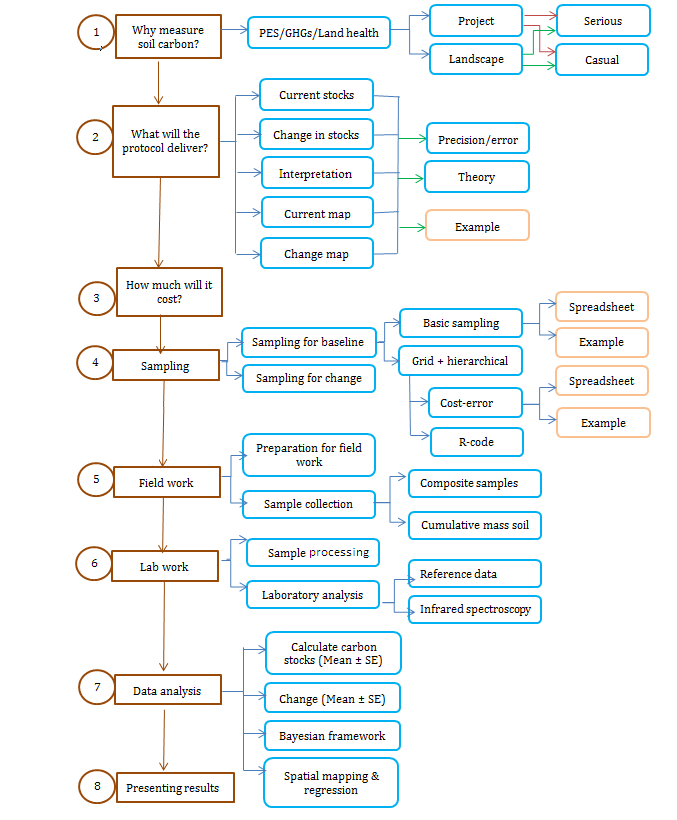
Measurement and Monitoring Soil Carbon
Guide
Soil carbon stocks are of interest to many different audiences for different purposes. The ideal measurement scheme would be tuned to the exact purpose and context for which is required. But it is rarely feasible to develop and refine methods for every situation. Hence we describe a generic procedure that is suitable for some purposes.
The audiences for this protocol are:
- The manager of a soil carbon project, who needs to decide whether to go ahead with soil organic carbon stock (SOC) measurement and what form such measurement should take.
- The technical staff of such a project or consultants hired by it that need to execute the protocol and produce outputs.
The protocol can be applied to any project size with various land uses.
Structure of the protocol: to guide decision on measuring soil carbon or not. At the same time we have detail guides and examples on the horizontal flow to the right. The top-level (brown box) contains a summarized information for a project manager who may not be interested in the detail technical aspects of measuring soil carbon while some detail technical guides and examples are presented along the horizontal axis.
